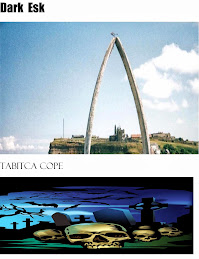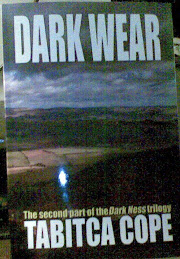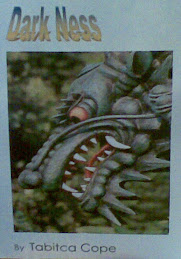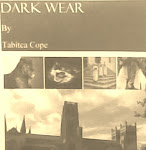The Brosno dragon or Brosnya is a creature believed to reside in Lake Brosno which is situated, in the Tver region, near the town of Andreapol in Russia It is a deep lake with a maximum depth, as discovered recently of 160 meters .Stories about a giant creature living in Lake Brosno have been around for centuries. . One of the legends says that the lake monster scared to death the Tatar-Mongol army that headed for Novgorod in the 13th century. Batu Khan stopped the troops to rest on the sides of Lake Brosno, when horses came down to the lake, a huge creature emerged from the water roaring and started devouring horses and soldiers. The Batu-khan troops were so terrified that they turned back, and Novgorod was saved. Old legends say that some enormous mouth devoured fishermen. Chronicles mention some "sand mountain" that emerged above the lake surface from time to time. Once, Varangians (Swedish mercenaries) wanted to hide stolen treasures in the lake. But when they approached the small island, a dragon came to the surface from the lake and swallowed the small island up.
The thought of the monster became fixed in people's minds over the 18th - 19th centuries. It was rumoured that the creature emerged on the lake surface in the evenings, but immediately submerged when people approached. Supposedly during WWII the beast swallowed up a German airplane. Numerous witnesses say that they have seen a head above water that looked like a dinosaur or a dragon head with a long thin tail. Other people said that the creature was covered with scales like a reptile .
In November 1996, the Karavan weekly (A Russian magazine) started an expedition to Lake Brosno in the Tver Region. The expedition consisted of writer and journalist from Tver Yeugeny Novikov, head of the Tver Regional Legislative Assembly's press-service Nikolay Ishchuk, journalist Marina Gavrishenko, photographer Anaida Jilavyan and editor-in-chief of the Karavan newspaper Gennady Klimov.
Gennady Klimov says: "The lake actually keeps some secret. When the depth of Lake Brosno was measured, it turned out that in some parts it was 120-160 meters deep. It means that Lake Brosno is the deepest in Europe. What is more, the lake belongs to the preglacial epoch that is why mysterious phenomena are quite possible in it. As for me, my concerns about the whole of the story are quite particular. The nature here in the Tver Region is wonderful and pure. There is a unique technology of making and using myths. These technologies will be extremely important in the future."
Marina Gavrishenko, the journalist who took part in the expedition says: "At first sight, the whole of the monster story looks like a fairytale. After the expedition to Lake Brosno, I do believe that the place is actually mysterious. Stories told by witnesses prove this opinion. We met with local people who were perfectly sane and adequate. What is more, all legends about the mysterious monster trace the roots back to the old times. I am sure that legends and rumours cannot arise from nothing."
Nikolay Ishchuk, the head of the Tver Regional Legislative Assembly press-service says: "I do not believe in wonders. What we chanced to see at Lake Brosno is actually mysterious and incomprehensible. If the phenomenon can be explained with the laws of the planet's life, I believe this is a miracle indeed. I recollect our expedition to Lake Brosno and our attempts to take pictures of the creature as a wonderful journey. This is wonderful that people may have such interesting adventures. May it be so that the expedition actually came across some miracle? Inexplicable things must exist in this world. When people do not understand some things they want to know more and reveal more new facts."
A tourist took a photo of something in the Lake in 1996 but it was blurry and inconclusive.
Experts of the Kosmopoisk research association went on an expedition to Lake Brosno together with Karavan in the summer of 2002 and did echo deep sounding. Vadim Chernobrov, the Kosmopoisk coordinator said in an interview to the Moscownewspaper Argumenty i Facty (Arguments and Facts): "Echo deep sounding registered an anomaly. There was a huge jelly-like mass of a railway car size , five meters above the bottom. The mass stood motionless. We waited for some time and then decided to make it move: we threw an underwater petard, a low capacity explosive device. When the device blew up, the creature started slowly going up. We starred at the water, and it was clear; there was nothing resembling a monster, however something unusual was still felt in the lake water."
REUTERS NEWS SERVICE
14Dec96 RUSSIA: RUSSIA'S "NESSIE" FRIGHTENS VILLAGERS.
By Nikolai Pavlov BENYOK, Russia, Dec 14 (Reuter) - Near the bottom of Lake Brosno, or perhaps deep in the recesses of man's imagination, a monster of huge proportions lurks. The evidence, much like that of Scotland's Loch Ness monster, is based on a single photograph and a few alleged sightings. The picture shows a panoramic view of Lake Brosno with an object floating in the foreground. As with the Scottish "Nessie," it is not clear whether the object is a large log -- or something more ominous from the deep. "I'm afraid," said one elderly woman, Varya, who lives in the small lakeside village of Benyok about 400 km (250 miles) northwest of Moscow. "I do not feel comfortable staying in this place. The monster could crawl into my house any day."
"It was big like this," said Tanya, another grandmotherly type who believes the creature hides from humans near the lake bottom. "I saw a head, like a fish -- and big." She sketched a snake-like head rising from the water with a large eye on the side. Tourists from Moscowcamping near the lake added to the legend by taking a photograph after their seven-year-old son shouted out that he had seen a dragon monster. A newspaper in Tver, the nearest major town, recently published the photo, and the story was picked up in the local media. "It is completely possible that the creature which you see in this photo is a relative of the famous Loch Ness monster," wrote the newspaper, Caravan-1. Locals who believe in the monster -- and there are certainly a fair number of sceptics -- say it is much like a serpent, and one report estimated its length at five metres (16 feet).The alleged sightings are not prompting scientists to rush to the attractive lake surrounded by trees to conduct tests however ."It sounds like a country fairy tale, the kind of story told over the years in the countryside," said Lyudmila Bolshakova, an expert at Moscow's Institute of Paleontology. Regional media said there are written reports of sightings of the monster dating back to the 19th century, and the legend is even older. But a group of journalists visiting the lake this week saw no sign of the monster. Source:(c) Reuters Limited 1996
And more from Tanya:
Babushka Tanya (Grandmother Tanya) and her husband, whose house is metres away from the shore, claim to have seen the monster on more than one occasion. Tanya took a Reuters Television camera crew to the lakeshore site from where she claims to have seen the monster. "I only saw a head of this creature, so I was not scared at all," she said while trying to draw the beast. "It is now on the bottom of the lake, deep, and it is hiding from the winter cold", she explained. Local press reports describe a creature about five metres (16 feet) long living in Lake Brosno, 80 km (50 miles) northwest of the Russian capital, and have published photographs, though they are too indistinct to be convincing according to some experts. Natalya Istratova, Professor of Biology at Moscow State Zoo, says it is "absolutely impossible" to say what kind of animal the monster might be without examining it. However one Lake Brosno resident, Baba Nadya (Grandmother Nadya), is terrified of the beast fearing it will crawl out of the lake and into her house "any day." A local press report describes a creature about five metres long. It quoted a local palaeontologist, Nikolai Dikov, as saying the creature's alleged shape suggests an extinct order of reptiles with teeth like mammals. Recent palaeontological excavations at Russia's old lakes of the tectonic origin, like Lake Brosno, are reported to have provided evidence to a theory linking the Brosno monster to pre-historic dinosaurs. Near the Siberian lake of Shestakovo, palaeontologists are said have found the bones of a pre-historic creature, quite similar to the descriptions of Brosno's babushkas. source :
However, some people are sceptical and say that the creature may be a mutant beaver or a giant pike possibly 100-150 years old . Maybe it is a sturgeon? I am surprised no one brought that one up. The descriptions vary from fish to dragon but anyone with experience of eye witness testimony knows it is unreliable and what looks like a fish to one person looks like a fowl to another! It’s a wonderful story though and I would love to see some serious investigation there with a mini sub or diving bell. Certainly the legend has been around almost as long as the story of Nessie and should be investigated in two strands, one on the folklore and one on the biology of the lake.




















